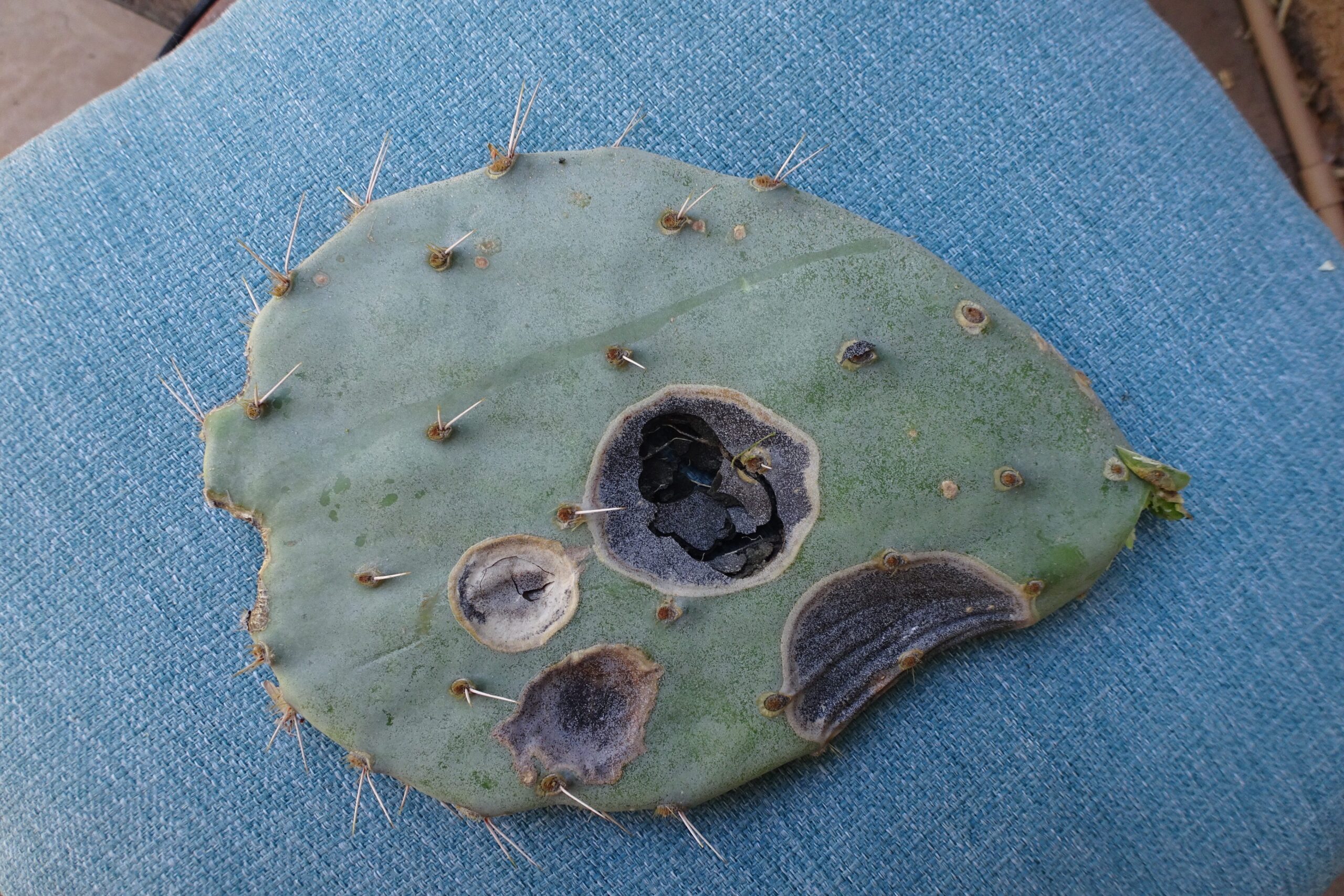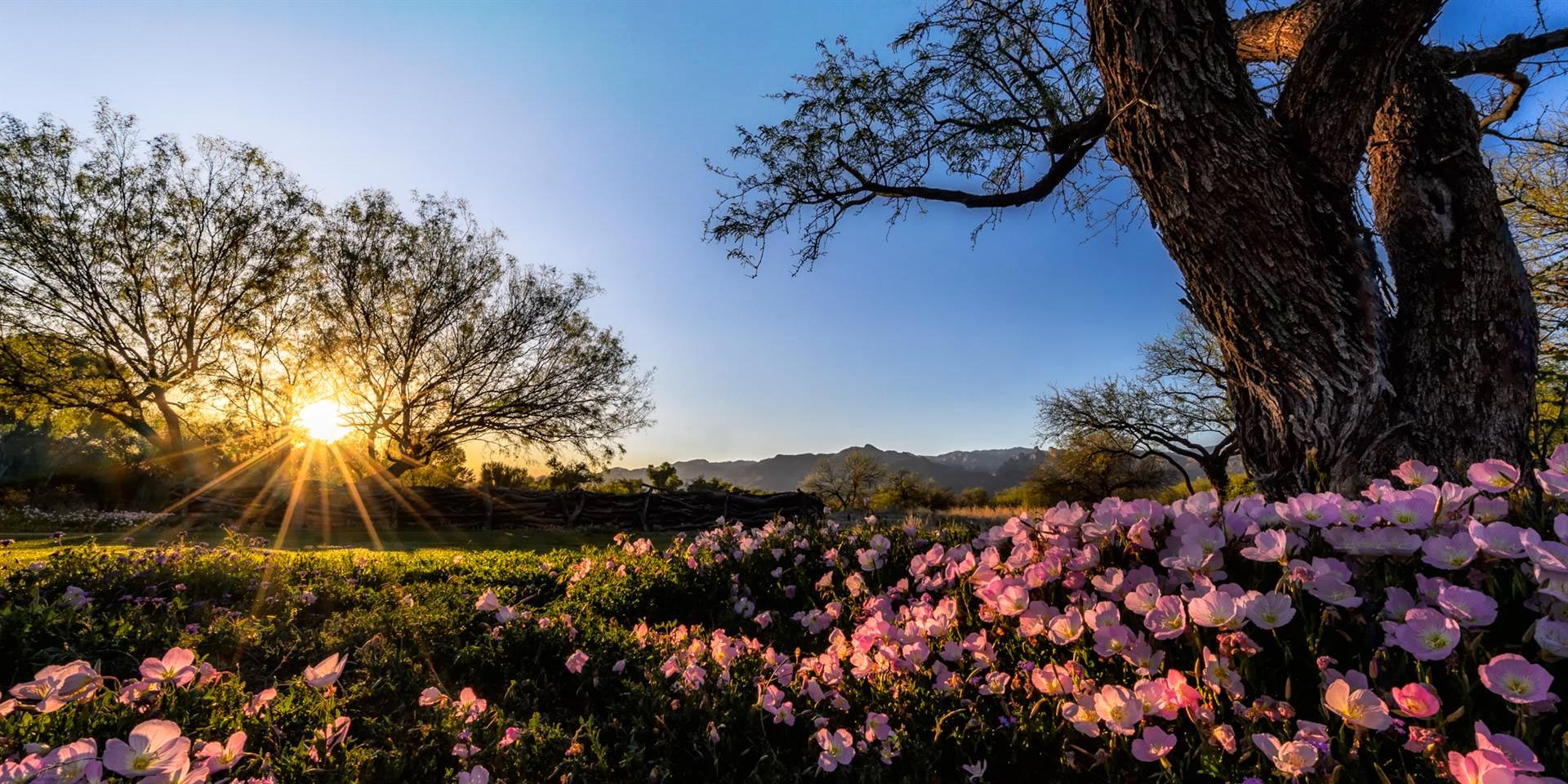A Tucson area HOA president sent photos of ailing prickly pears in the development:
Posted May 15, 2022
Can you identify what is the problem with these Prickly Pear, and if there is any treatment, or what should we do? It is quite widespread in our community. I am hoping you can help with some suggestions.
Tucson Chapter President Jack Dash replied: What you have there is Phyllosticta commonly called Pad Spot Fungus. This has been a very widespread issue this year because we had a perfect confluence of events to encourage fungal spread. First we had the extremely dry year of 2020 into spring of 2021 which caused severe stress on most prickly pear populations both in urban and natural settings. Then we had the incredible rainfall of Summer 2021 which created the moist, humid conditions necessary for Phyllosticta to spread and thrive. The fungus tends to go more or less dormant when conditions dry out so most of the damage you are seeing is essentially old damage.
There is no fungicide currently recommended for Phyllosticta to the best of my knowledge. You could confirm that by calling our local University Agricultural Extension. Essentially the best practice is to remove infected growth, and in extreme cases remove whole plants. The fungus seems to affect most if not all species of prickly pear but I do tend to see it more on Opuntia engelmanii (which appears to be what you have in your photos) and there may be species or cultivars which are more resistant.
In huge patches of Prickly Pear it can be difficult to remove all infected pads or plants and in reality the plants may recover just fine but it is obviously unsightly.
Sorry I can’t provide a clear solution to the problem, again you may check with the Ag Extension office to see if they recommend a particular product to treat infected plants but there is not much literature in print or online that I have seen which advocates spraying for Phyllosticta.



